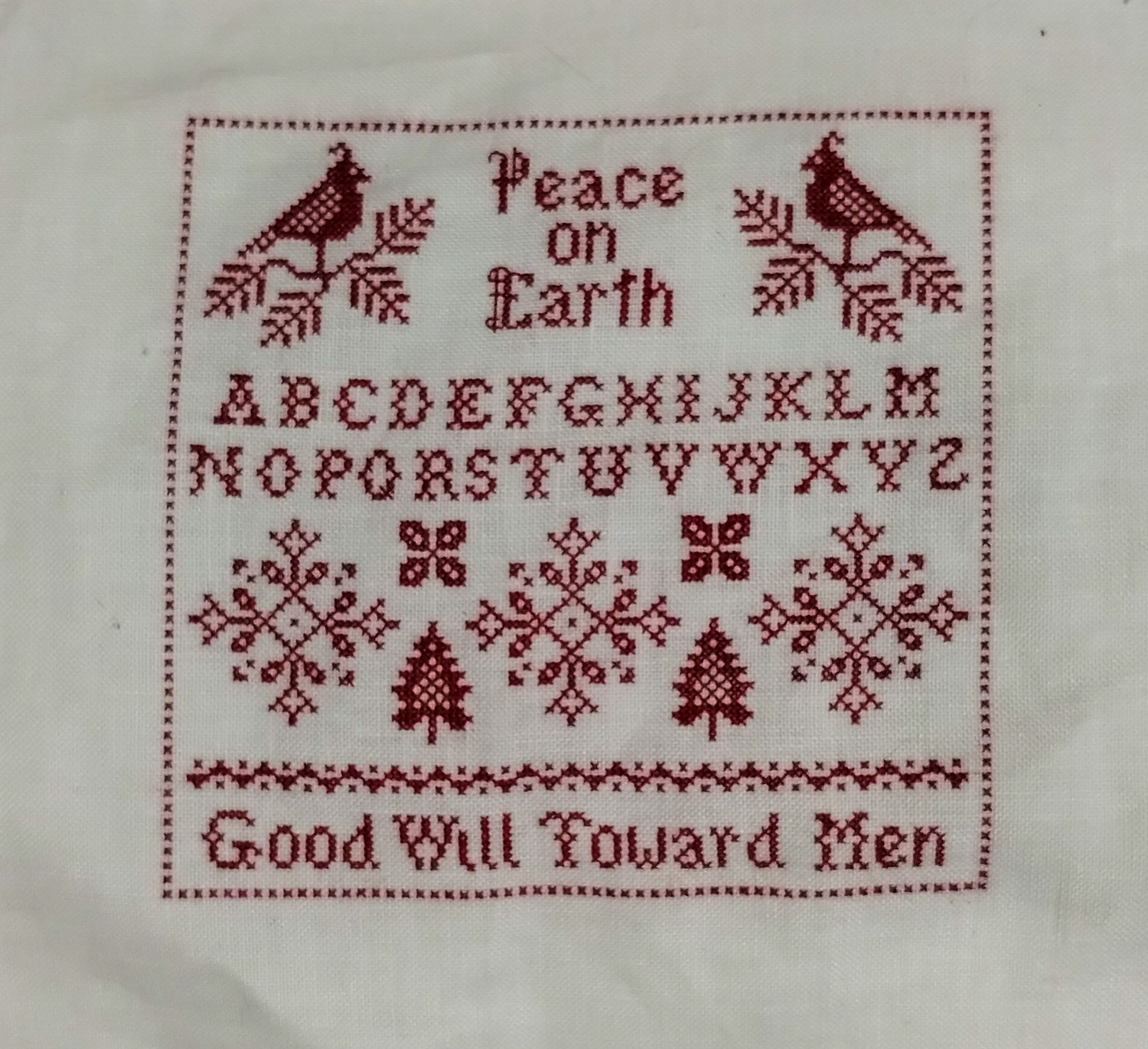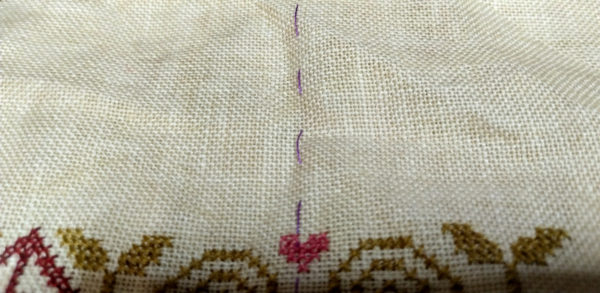When I got back into cross stitching almost two years ago, I started with 28 count linen and thought those holes looked pretty tiny. From there, I jumped to 36 count and thought anyone was crazy to try stitching on those tiny holes but 36 count allowed me to use one strand of floss and I really liked that. I think I started stitched on 40 count as a challenge, or maybe it was a dare!
The holes were a bit smaller but I liked the end product. I’ve recently tried 46 count linen and it isn’t terrible.

I pulled out For the Love of Nature and started stitching on it. This is a UFO I started in December, 2020 and it’s stitched on 36 count linen. This may be the first piece I started on higher count linen.

I was shocked at how large the holes seemed in this piece of linen. In fact, I got out the chart, and checked the stitch count/measurements.

I could measure off a couple of inches of linen, count holes or threads/divide by 2 and that would give me the same info but since I already had the outer border stitched, I simply measured edge to edge.

The measurement came out to about 10-3/4″ x 10-3/4″. If the piece was taut, it would probably measure at exactly 11″ x 11″, which means this is really 36 count.
I’m telling you all this because if you’ve been stitching on 14 count aida and move on to 46 count linen, it’s going to probably feel like torture but if you want to move up to a higher count linen, I think if you try it and stick with it, you can do it and it will get easier.
Of course, there’s nothing wrong with stitching on lower counts of linen or aida . . I’m just saying that IF you want to stitch on higher counts, it probably won’t always stay as hard as it seems in the beginning.


Kathy Henderson says
I’m still a beginner at cross stitching on linen. I was working on the Blessed SAL on 36 count but haven’t quite finished it yet. I found a chart I really wanted to stitch, so I got all of the supplies, including 36 count linen again. If I remember correctly, I was using two strands for Blessed, and now I’m using 1 strand. I haven’t gotten very far, but the coverage seems sparse. Did you ever have trouble with coverage with 1 strand on 36 count linen?
judy.blog@gmail.com says
I think it’s a matter of personal preference. I prefer a bit more sparse coverage than a denser coverage. If you prefer the coverage from two strands, I’d recommend using two strands. On 40 count and above, you might find two strands look bulky but I think 36 count can definitely go either way.
Kathy Henderson says
Thanks for the reply! I’ve really only just started the project so I’ll stitch a little more and see how it looks. I’m so close to it while I’m stitching, I see every little thing, but now I’m looking at it farther away it seems fine.
Nancy says
I’ve used both one and two strands on 36 count. I like the look of just one strand on a reproduction sampler but on other charts I like more coverage. I do agree with you that stitching on higher counts gets easier the more you do it. I mostly stitch on 40 count now, but sometimes I just want to do something on 32 count. Seems so quick and easy.
judy.blog@gmail.com says
I agree.
Kathy Henderson says
Thanks Nancy. I can see how you’d want a different look for a reproduction sampler than a modern design. It’s good to know that I can kind of decide for myself depending on the look I want. I’m used to the kits of the old days when you just followed what the directions said.
Tracy says
–My current project is a one color sampler from Longdog Samplers called “The Pilgrim”. I decided to experiment with the thread and I’m using Aurifil #12 in a peacock blue shade on 36 count linen. I like the coverage, and the ease of unrolling a piece of thread from the spool that is ready to sew with. I have also used the Sulky #12, with good results, for a small Luminous Fiber Works project.